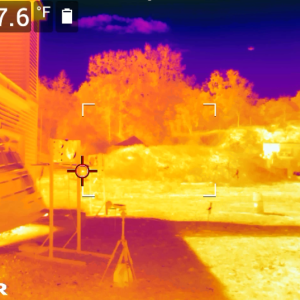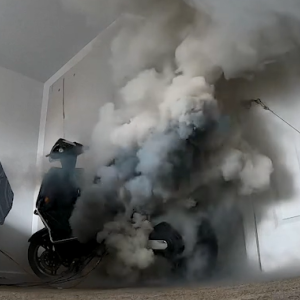
FSRI Researchers Transfer Key Knowledge at the Society of Fire Protection Engineers’ First Lithium-Ion Battery Symposium
In June 2024, researchers from the Fire Safety Research Institute (FSRI), part of UL Research Institutes, participated in the Society of Fire Protection Engineers (SFPE) symposium, Progress with Lithium-Ion Battery Fire Safety: Engineering Solutions to Mobility and Storage Hazards. The three-day event marked the first symposium for the fire protection engineering community focused on lithium-ion battery hazards. Adam Barowy, lead research engineer with FSRI, served as the symposium chair while helping to orchestrate the entire event. United States Fire Administrator Dr. Lori Moore-Merrell delivered the opening keynote emphasizing the need for: improved incident data collection to better quantify the risk to the public from li-ion battery fires, research data to inform battery incident operational procedures, and the deployment of fire safety messaging regarding safe usage, storage, and charging of Li-ion batteries and their unique risks.
About the SFPE Lithium-Ion Battery Symposium
Adam Barowy led the program committee to develop a series of sessions to educate the fire protection engineering community on the hazards of lithium-ion batteries. The first session focused on sharing the fundamentals of lithium-ion battery thermal runaways, the hazards that can develop, and methods for detecting thermal runaway events before they occur. The second session provided an overview of existing means for addressing hazards and how the codes and standards community is addressing gaps. The third, fourth and fifth sessions featured speakers who shared the latest engineering safety methods in North America related to electric vehicles (EVs), e-mobility devices, and energy storage systems.
Initial Findings from FSRI’s Lithium-Ion Battery and Electric Vehicles Study
During the symposium, Nate Sauer, a postdoctoral researcher with FSRI, presented initial findings from the Fire Safety of Batteries and Electric Vehicles research project. This FSRI-led project aims to understand fire hazards generated by EV battery fires to enable the development of firefighting tactics for effective EV fire control. The first phase of experiments were conducted earlier this year and enable an analysis of general EV fire behavior. This phase aimed to obtain full-scale freeburn data without suppression to enable comparison between internal combustion engine vehicle (ICEV) and EV fires to identify and understand observed differences with fire behavior and toxic gas exposures. The analysis is ongoing; however, some key initial findings to be considered by the fire safety and emergency response community are:
- Measured peak heat release rates for EVs and ICEVs were similar.
- Larger modern vehicles increase the risks of fire hazards, regardless of whether they are EVs or ICEVs.
- For this project, vehicle battery cells burned completely with no intervention. However, in some EV designs, connections between the battery pack and the chassis failed, causing the battery to fall onto the ground while on fire, potentially leading to increased heat transfer to the road surface.
- Air bags, tires, shocks, gas struts, and tire repair equipment often rupture energetically during vehicle fires and can produce shrapnel hazards.
- Vehicle construction influences the spread of fire and its growth rate.
Presentation recordings will be available in the future for SFPE members and symposium attendees. To learn more about the symposium, visit the SFPE website.

